BITES
BITES is an open-source platform model that enables groups of creative people to develop, contribute and invest into different types of projects and ideas with their own time or capital.
Completed in 10 weeks at CIID, with major help from people way smarter than me: Calle Nordenskjöld (CIID), Stiven Kerestegian (CIID), Simona Maschi (CIID), Tobias Toft (IDEO), Blair Johnsrude (CIID), Shruti Ramiah (IDEO), Engin Ayaz (ATÖLYE), Marco Triverio (Apple), Ekaterina Gianelli (Inventure), Heather Martin (Smart Design).
My role: concept, research, UI/UX, prototyping, visual design.
Link: Project blog
BITES is a concept with an aim to create a platform that enables networks of creative people to develop, contribute and invest into different types of projects or ideas with their own time or capital. Built on Ethereum Blockchain, Bites allows easy distribution of shares and capital, thus enabling a more trusted way of facilitating agreements between contractors and clients via Smart Contracts. In such way, the platform aims to create a financially incentivised collaboration model, where people would be guaranteed of receiving reward for their contributions, should the projects they have worked on become financially successful.

The problem
The project started by identifying a challenge CIID itself has been facing since the very beginning of its existence. While during each year students produce over 150 projects, none of them are being taken further. After conducting interviews with students, design professionals, strategists and investors, we've identified several reasons for such situation:
1. There is no financial incentive to take the project further.
2. There is no easy way to formalise the ownership of the project.
Desk research
The issues related to capturing value of creative networks of people has been a relevant one for a while. I've discovered that recently people have been trying to tackle such issues by trying out new organisational structures, based on decentralisation. One of such structures, Decentralised Autonomous Organisation (DAO), enabled by Ethereum Blockchain technology, recently has been gaining a lot of attention. Thus, I decided to dig deeper in order to understand how such concepts work. Most of the communities around DAOs exist on Slack, so I went ahead and asked about how would such concept work in the context of my problem.
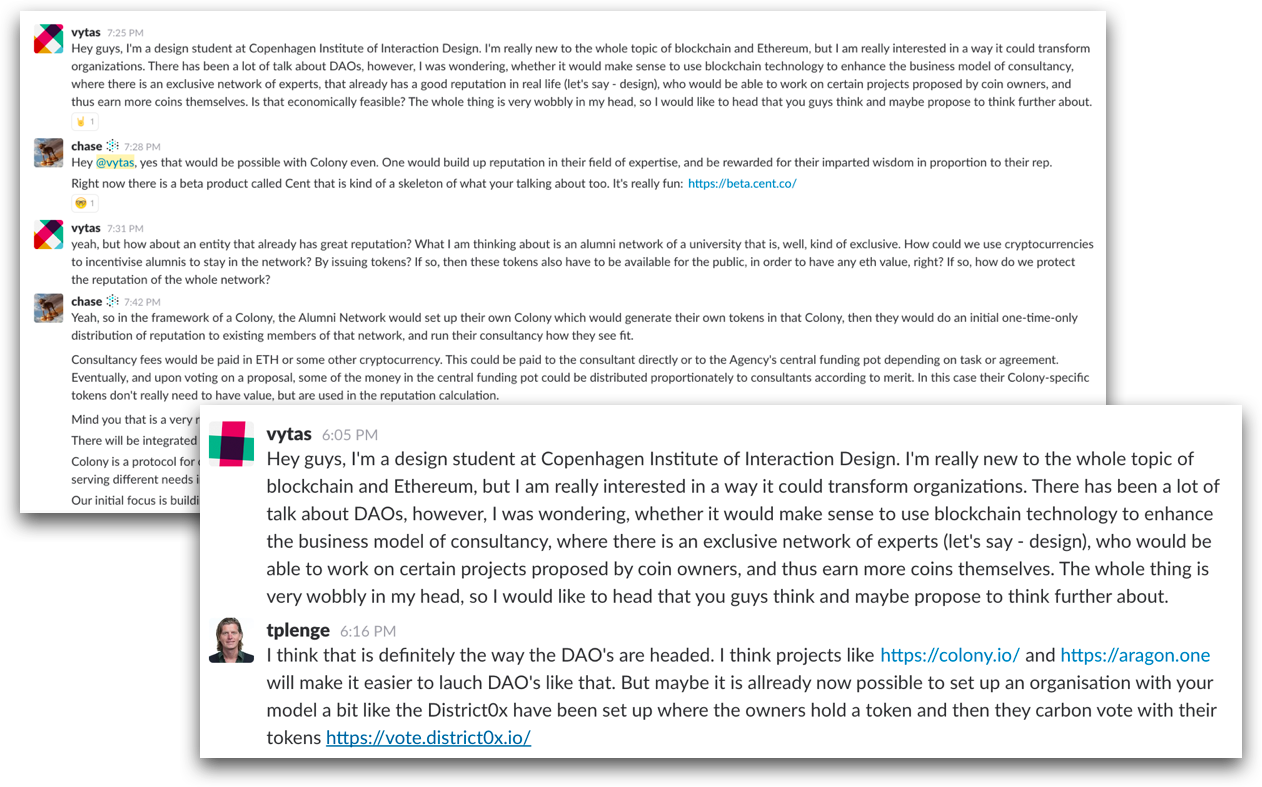
DAOs definitely have their own advantages:
1. They are accessible to general public, thus...
2. They are democratic.
3. They don't have a central authority, thus are resilient to concentration of power.
4. Everyone in the network of the DAO owns part of the company.
However, such features bring certain disadvantages:
1. DAOs still can't solve issues related to trust. Scam is still a thing.
2. Since everything has to be voted on, there is a lot of bureaucracy, and things move slow.
3. Open Innovation can get tricky, since everyone on the internet can have access to the intellectual property, including potential competitors.
4. Since complex decisions are made by the crowd, pitching skills may be more valuable than the actual value on creates.
Ideation
The question we have set to ourselves at this point was “How do people relate to and what roles do they play in complex systems?”. However, organisational structures are complicated systems, and it is very had for regular people to relate to them. Thus, I have decided to run a ideation workshop that would tackle the question around the systems that people might find more relatable: music industry, democracy, design process.
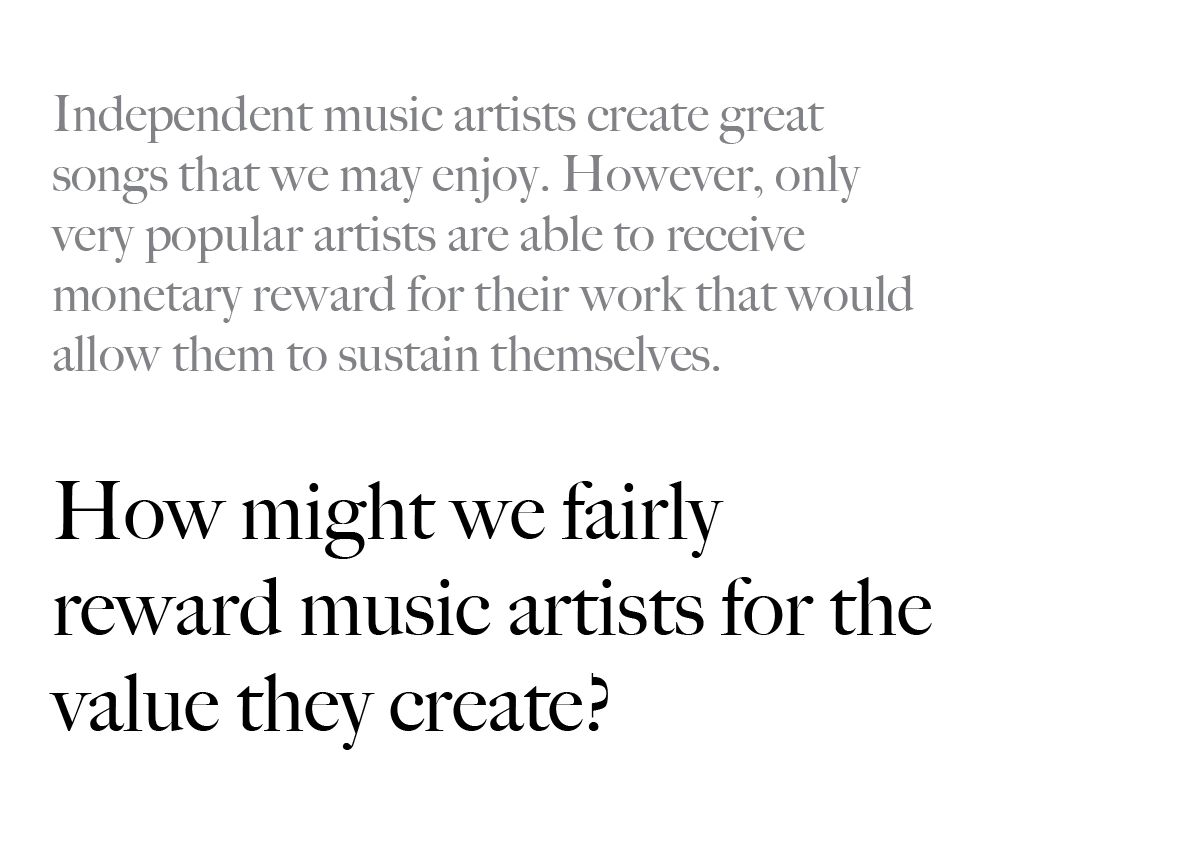
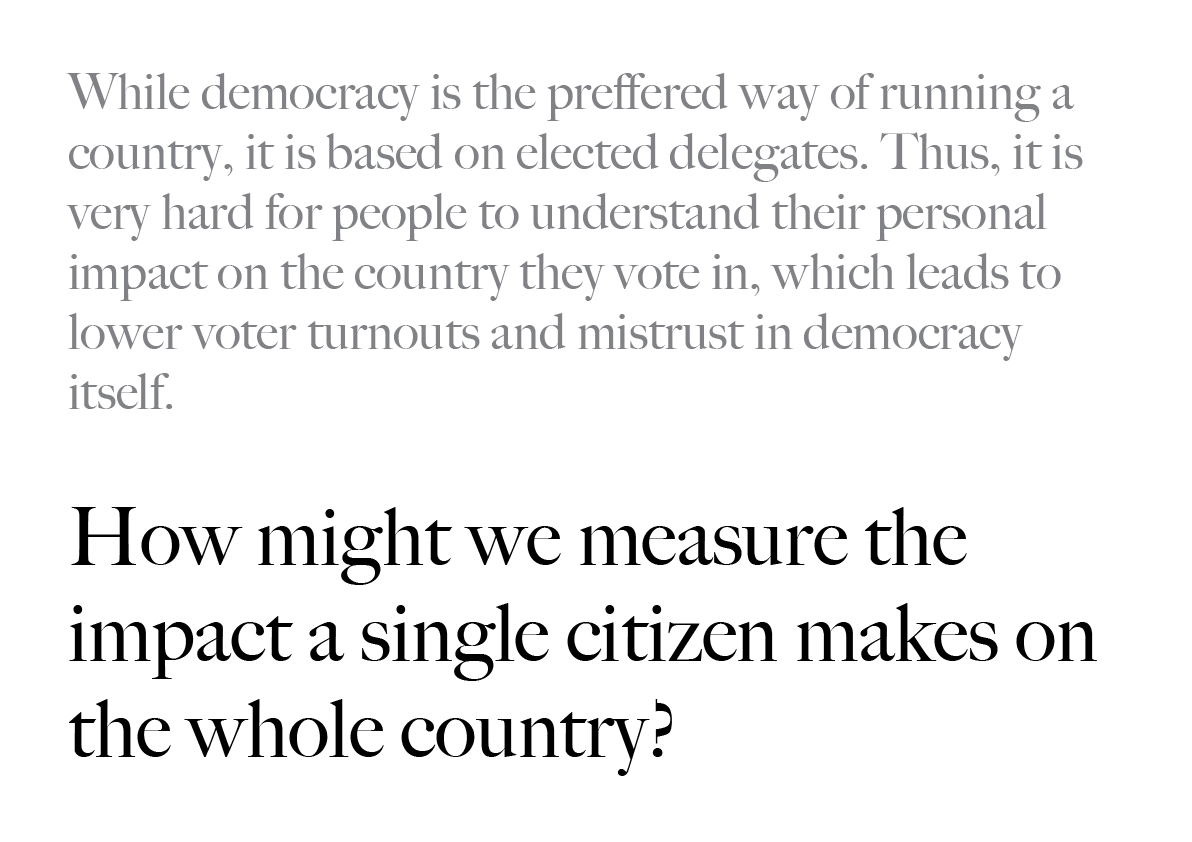

The session appeared to be really successful: people have understood the problems well and have started ideating on different types of systemic solutions.

System mechanics
Being inspired by the initial ideas, we have started to converge back towards the initial problem space and sketch out first prototypes of systems.
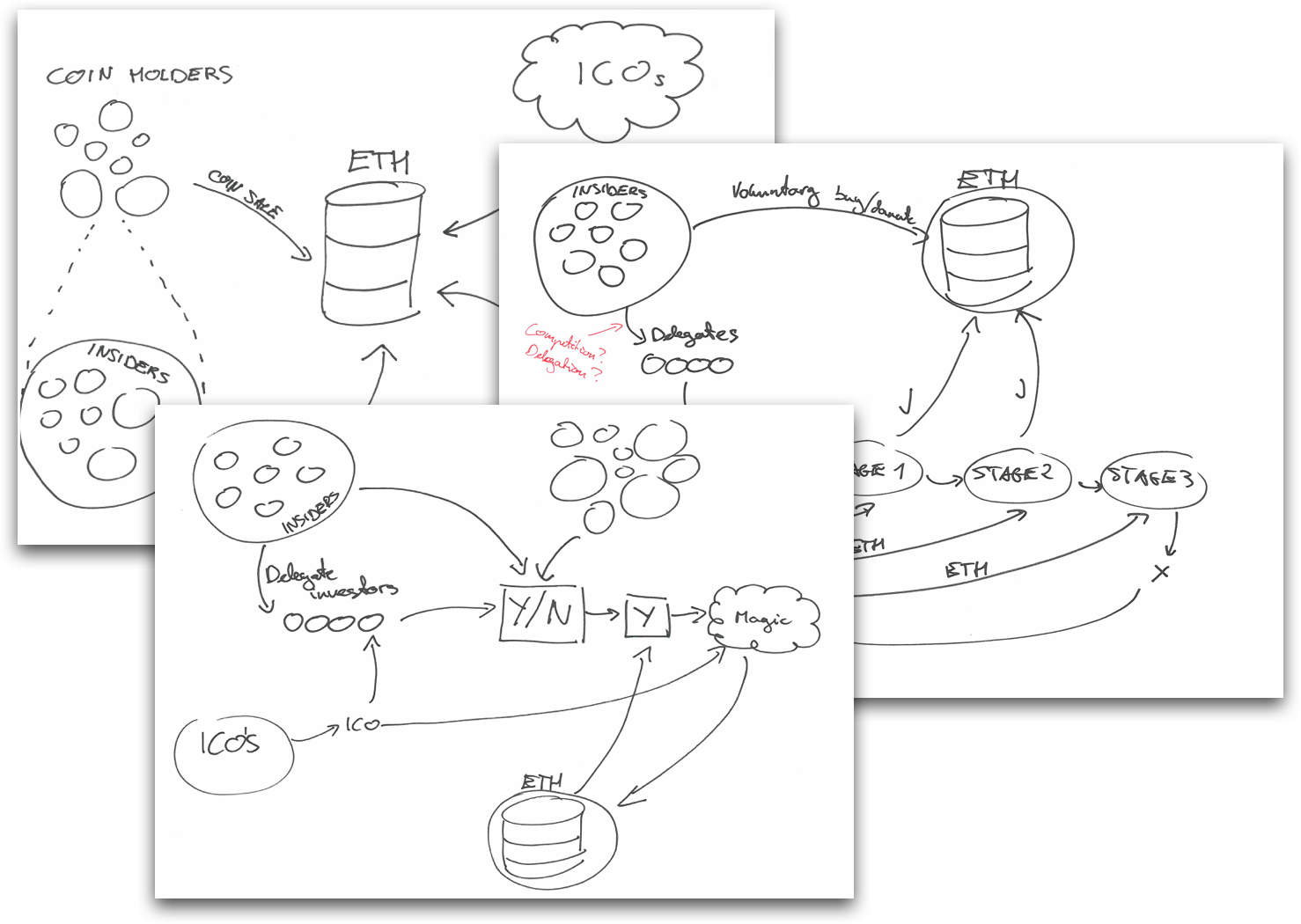
The decision was made to still build on a concept of DAO, but on a closed network (such as an alumni network of a grad school), that would allow us to avoid drawbacks on open organisations.
The initial description of system mechanics has been drafted (full version available here).
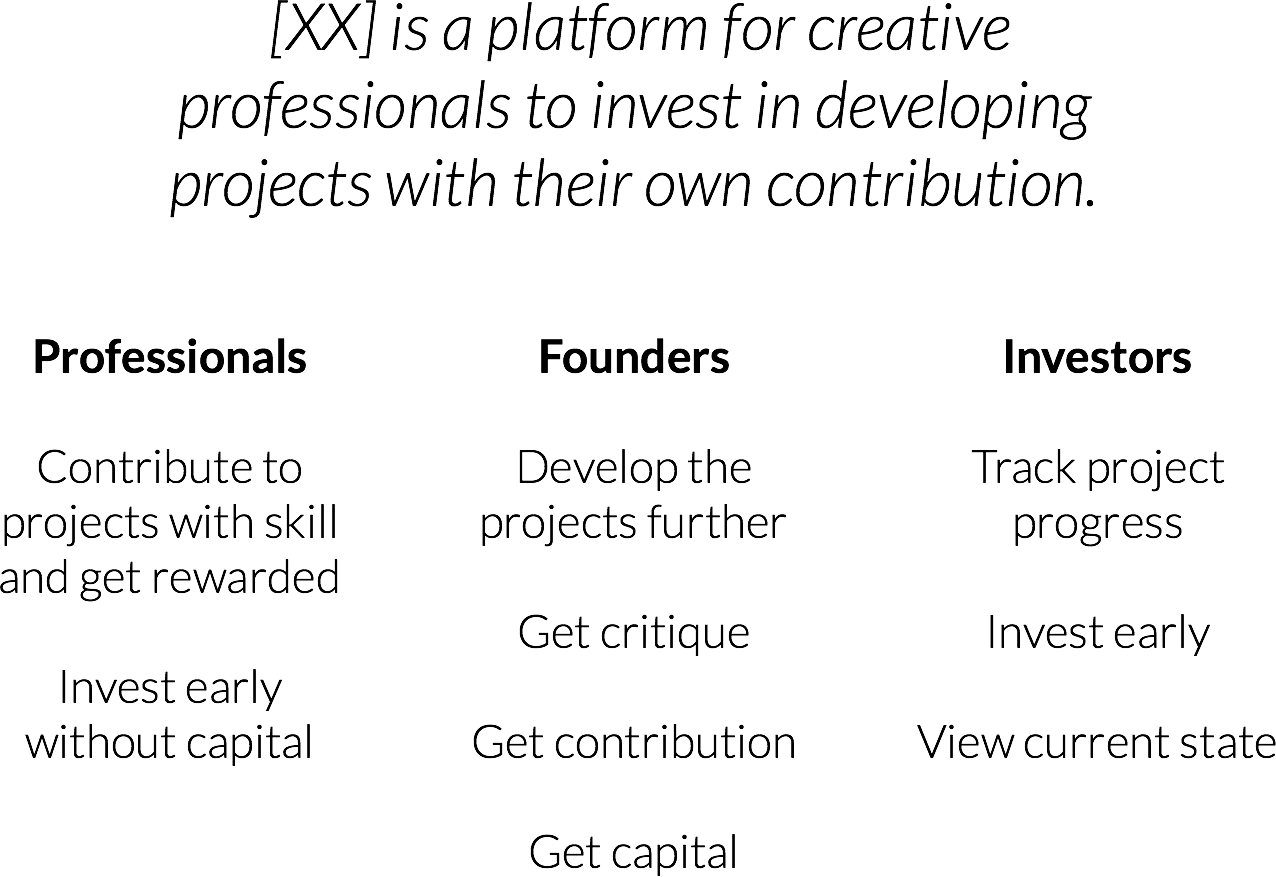
Before starting to build tangible solutions, we wanted to see if the mechanics do make sense. Thus, we have interviewed people (both offline and online), asking such questions:
1. Does the system make sense to you?
2. How would you simplify it?
3. Does this bring any value at all?
4. What parts you find difficult / complicated / hard to understand?
5. In what way would you see this system working?

Prototyping
After receiving the feedback, the first prototypes have been drafted out. In order to test out the layout, UI navigation and interactions, paper prototypes have been made and tested with respondents.
Final concept
The end result of the concept was UI design made in Sketch, prototyped
in Keynote animations.
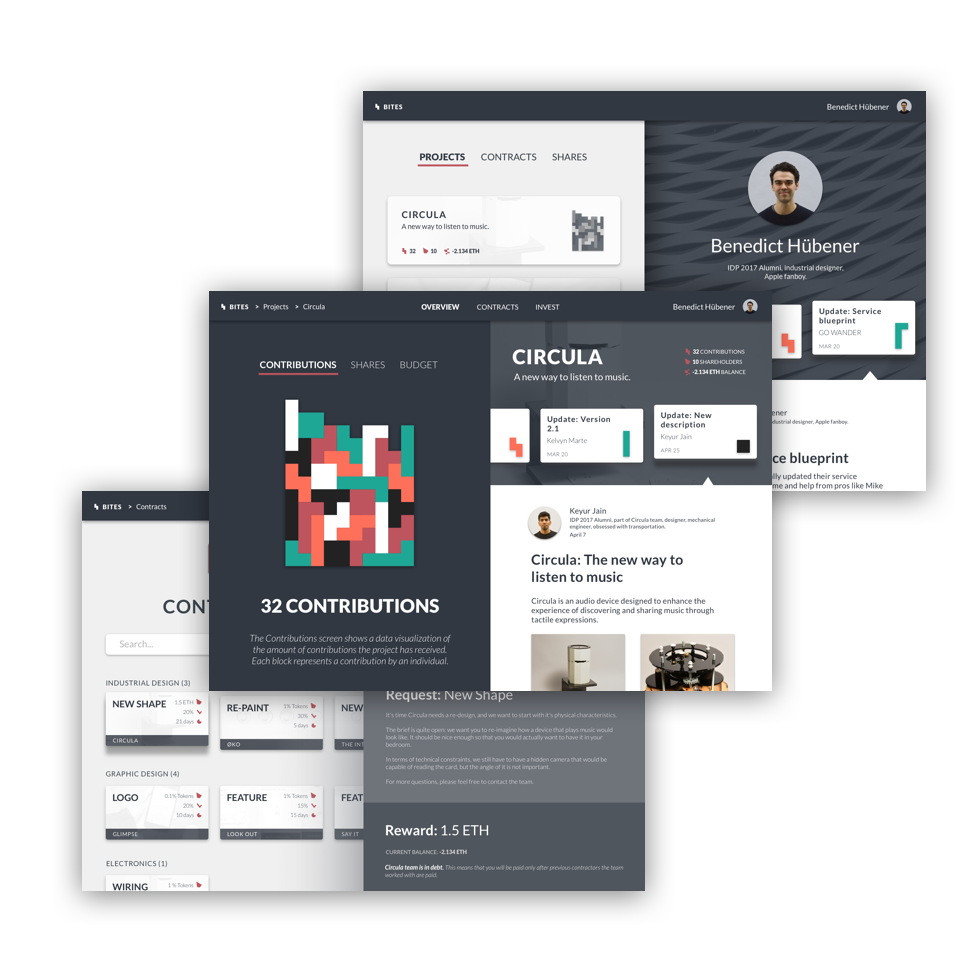
Learnings
This project was one of the biggest design learning experiences I've had. While I was continuously supported by a lot of mentors, most of the time I have spent working and making decisions alone. While that may sound like a nice place to be, I feel that the concept would've been developed into something a bit more multi-dimensional and thought-through if I wold've worked in a team of peers. Having constant discussions about directions we as a team should be taking definitely has its own advantages.
This was also the biggest and most complex UI project I have ever taken full responsibility on. While I ended up designing a fictional UI system that would need to be re-designed if it was taken further for web, this exercise taught me a lot more about typography, colour theory, layouts, and micro-interactions than I knew before.
Systems thinking was one of the topics that I got myself into during the project. While on itself, it is a tremendous topic, one of the key takeaways for me is perfectly summed up in a quote by John Gall:
“A complex system that works is invariably found to have evolved from a simple system that worked. A complex system designed from scratch never works and cannot be patched up to make it work. You have to start over with a working simple system.”
Creating a simple system is not as easy as I had expected, and that was where I was struggling the most. If I was to re-do this project again, I would aim to prototype more, involving more real-life people.
In the end, I am extremely happy and grateful for CIID and its network of mentors that led me through this learning experience. It definitely paved a way for me as a starting designer to pursue more challenges in this area.